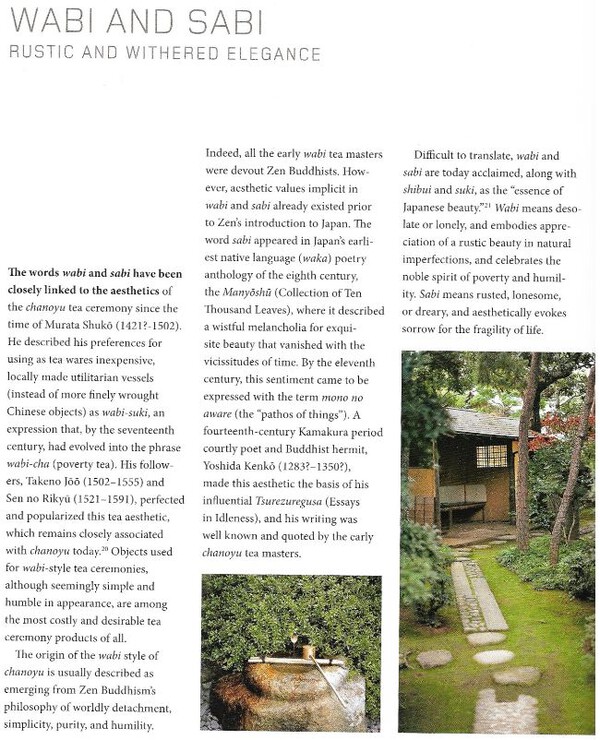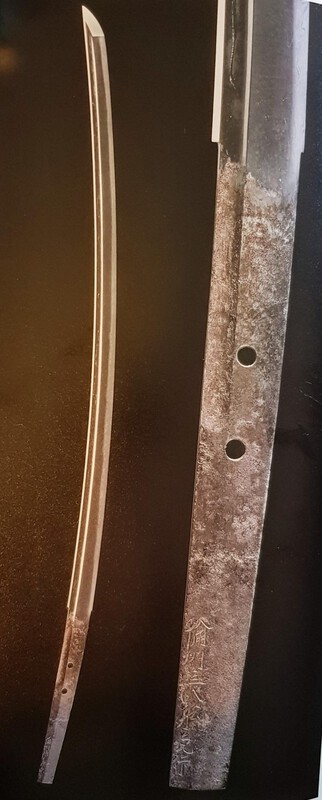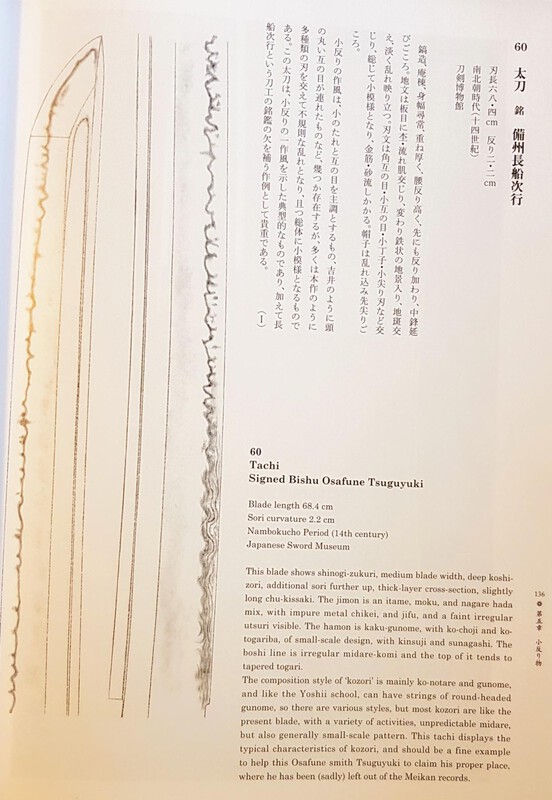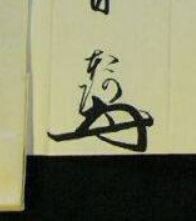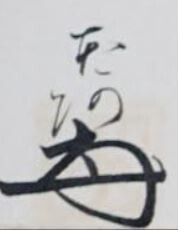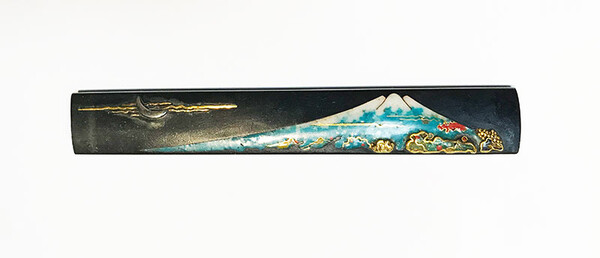-
Posts
1,088 -
Joined
-
Last visited
-
Days Won
5
Content Type
Profiles
Forums
Events
Store
Downloads
Gallery
Everything posted by DirkO
-
Yep BPOST (affiliated with EMS and USPS) should be just fine. Sent several books + nihonto to the US that way. But shipping won't be cheap.
-
Similar one (I really liked it, but just missed out on it, currently in Scandinavia somewhere) - papered to Ko-Shoami
-
-
Regarding its first use - after some digging in my books, I found this interesting article: "The words wabi and sabi have been closely linked to the aesthetics of the chanoyu tea ceremony since the time of Murata Shuko (1421?-1502). He described his preferences for using as tea wares inexpensive, locally made utilitarian vessels (instead of more finely wrought Chinese objects) as wabi-suki, an expression that, by the 17th century, had evolved into the phrase wabi-cha (poverty tea)...." Rest in below screenshot. From the excellent book 'Japanese Design - Patricia Graham' (I think it's Ford who put me on that title, so thx for that!)
-

Daisho tsuba really Unno Shomin?
DirkO replied to terminus's topic in Auctions and Online Sales or Sellers
Typical things to consider. Would a Japanese sell this on eBay, unpapered? He has easy access to shinsa and experts and it would be easier to sell domestically if legit... -
-
This from Markus' kantei book. I know it's also published in another book, but I don't have access to that one right now.
-
There's one published Tsuguyuki Kozori blade I know of. I'll try and post pics tomorrow.
-

Japan Art expo 2020
DirkO replied to paulb's topic in Sword Shows, Events, Community News and Legislation Issues
Signed up as well! If anything, this post gives me some time to build up my warchest -
This is not a bad starting point : Markus Sesko's Compendium https://markussesko.files.wordpress.com/2015/04/nihontocompendium-e1.pdf Start at about page 60
-
Yes - I don't have a picture of the exact paper, but it's noted in the sales page that it carries NBTHK Hozon papers
-
It's Ko-Mino - I have several papered yamagane(although that term is debatable)Ko-Mino kogai on file. This one actually comes close to yours.
-
I think it's: 大金子拾参枚 Dai-kinsu jū-san mai And as you said, both forms mean the same and are commonly found on Hon'ami origami.
-
Hi Chris, Being the owner (and obviously biased), I think this one's more for me - the Tohachi attribution is backed up by recent Hozon papers directly to Tohachi and when you examine it in hand, there's really little doubt that this is a correct attribution, albeit not an obvious one. The seppadai, when you look at it straight down, is correct for Tohachi, I can easily find references with the same seppadai shape. The hitsu-ana in this case are part of the rope design and can't really be taken into the equation - otherwise they're indeed a-typical. And about copying designs - this exact design is also noted in the Kamiyoshi Tsuba Ehon, which makes it less likely to be a copy by another school, seeing those usually add their own take on a design.
-
Thx @Markus for the explanation - had the kanji right, but didn't know the correct reading/meaning!
-
Hi Steve, this puzzled me as well, especially seeing I could easily find other Hon'ami origami with the same kanji (albeit a bit less stylized) After some searching, I came up with the idea that it might not be describing an exact month (going from your poetic variation remark) and it might be this: 極月 giwametsuki not a real word, but could be something like "appraisal month" ?
-
Checked my resources - it's Hon'Ami Tenrai (from the Komi lineage). Far more reputable than his father, published some books and was avidly looking to revive interest in nihonto (start of 20th century).
-
Kao looks like Honami Tadataka or Tenrai. The first one sadly being a notorious drinker and of somewhat doubtfull repute and Tenrai his son. There's more info about them in Markus' excellent book on the Honami family.
-

Nihonto Collection
DirkO replied to YourFriendlySwordGringo's topic in Auctions and Online Sales or Sellers
The thing is, these names make little sense to modern Japanese, so they make their own interpretation of what's stated. You might want to have a look here: http://www.jssus.org/nkp/common_kanji.html -
-
A lot harder than I thought! Although I didn't spend nearly enough time with my books on these - I will give it a try: Kantei 1 Taikei Naotane – Shinshinto – Koto Bizen revival piece. Seeing the outstanding hada with a lot of activity and the yakigashira that seem to vanish in the hi, I opt for Naotane rather than Munetsugu. Kantei 2 Tsuda Echizen Sukehiro – Shinto Kanbun - a bit machi-okuri –- High Mune - condensed ko-itame with a lot of ji-nie – frayed nie that go into the ha together with clear and bright jiba point towards Sukehiro. Was first leaning more towards Hizen Tadahiro, but obviously the yasuri weren’t correct. Kantei 3 Late Kamakura, Yamashiro traits, utsuri that tends to shirake, jiba not bright enough for main Rai smiths. My guess would be Ryokai.
-
Love Michaels tsuba, mine pale in comparison. @Curran - no nice Hazama with sahari inlay?
-
With your additional info, Curran, I'll switch to ko-shoami as well. Odd nakago-ana in that case. interesting piece,nice buy!





